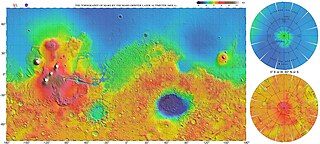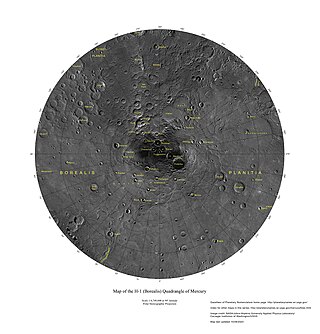
Corona Borealis is a small constellation in the Northern Celestial Hemisphere. It is one of the 48 constellations listed by the 2nd-century astronomer Ptolemy, and remains one of the 88 modern constellations. Its brightest stars form a semicircular arc. Its Latin name, inspired by its shape, means "northern crown". In classical mythology Corona Borealis generally represented the crown given by the god Dionysus to the Cretan princess Ariadne and set by her in the heavens. Other cultures likened the pattern to a circle of elders, an eagle's nest, a bear's den, or even a smokehole. Ptolemy also listed a southern counterpart, Corona Australis, with a similar pattern.

Bavayia is a genus of lizards in the family Diplodactylidae. Species in the genus Bavayia are also known commonly as New Caledonian geckos or bavayias. The genus is native to the remote New Caledonia and Loyalty Islands. The 41 species are moderately small to medium-sized geckos, and are distinguished from other genera by their tail length and the shape of their digits.

Vastitas Borealis is the largest lowland region of Mars. It is in the northerly latitudes of the planet and encircles the northern polar region. Vastitas Borealis is often simply referred to as the northern plains, northern lowlands or the North polar erg of Mars. The plains lie 4–5 km below the mean radius of the planet, and is centered at 87.73°N 32.53°E. A small part of Vastitas Borealis lies in the Ismenius Lacus quadrangle.

The North Polar Basin, more commonly known as the Borealis Basin, is a large basin in the northern hemisphere of Mars that covers 40% of the planet. Some scientists have postulated that the basin formed during the impact of a single, large body roughly 2% of the mass of Mars, having a diameter of about 1,900 km early in the history of Mars, around 4.5 billion years ago. However, the basin is not currently recognized as an impact basin by the IAU. The basin is one of the flattest areas in the Solar System, and has an elliptical shape.

The Borealis quadrangle is a quadrangle on Mercury surrounding the north pole down to 65° latitude. It was mapped in its entirety by the MESSENGER spacecraft, which orbited the planet from 2008 to 2015, excluding areas of permanent shadow near the north pole. Only approximately 25% of the quadrangle was imaged by the Mariner 10 spacecraft during its flybys in 1974 and 1975. The quadrangle is now called H-1.

Anthony Hume Whitaker was a New Zealand herpetologist, contributing a 50-year career of fieldwork, pioneering research and species discoveries. His is still the largest collection of reptile and amphibian specimens donated to Museum of New Zealand Te Papa Tongarewa.

Bavayia crassicollis, also known as the strand bavayia is a gecko endemic to the Loyalty Islands in New Caledonia.

Bavayia cyclura, also known as Günther's New Caledonian gecko or the forest bavayia is a gecko endemic to Grande Terre and Ile des Pins including their neighboring islets in New Caledonia.
Bavayia geitaina, also known as the gracile bavayia, is a species of geckos endemic to southern Grande Terre in New Caledonia.

Bavayia robusta, also known as the robust forest bavayia, is a species of geckos endemic to Grande Terre and Île des Pins in New Caledonia.

Bavayia septuiclavis, also known as Sadlier's New Caledonian gecko or the pale-stripe bavayia, is a gecko endemic to southern Grande Terre in New Caledonia.
Bavayia ashleyi is a species of geckos endemic to New Caledonia.
Bavayia caillou is a species of geckos endemic to New Caledonia.
Bavayia campestris is a species of geckos endemic to New Caledonia.
Bavayia insularis is a species of geckos endemic to New Caledonia.
Bavayia kanaky is a species of geckos endemic to New Caledonia.
Bavayia menazi is a species of geckos endemic to New Caledonia.
Bavayia occidentalis is a species of geckos endemic to New Caledonia.
Bavayia periclitata is a species of geckos endemic to New Caledonia.
Bavayia tchingou is a species of gecko endemic to New Caledonia.







